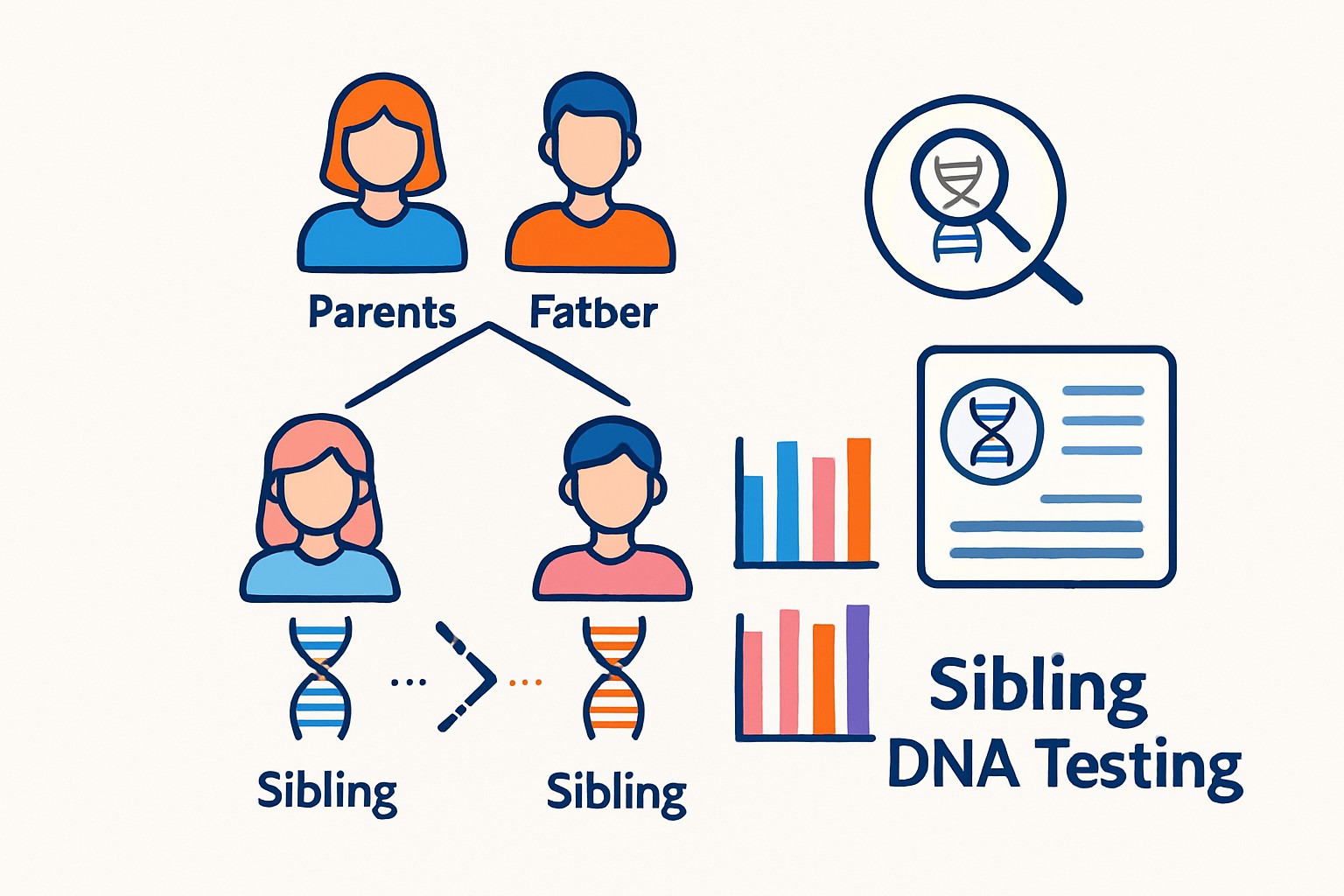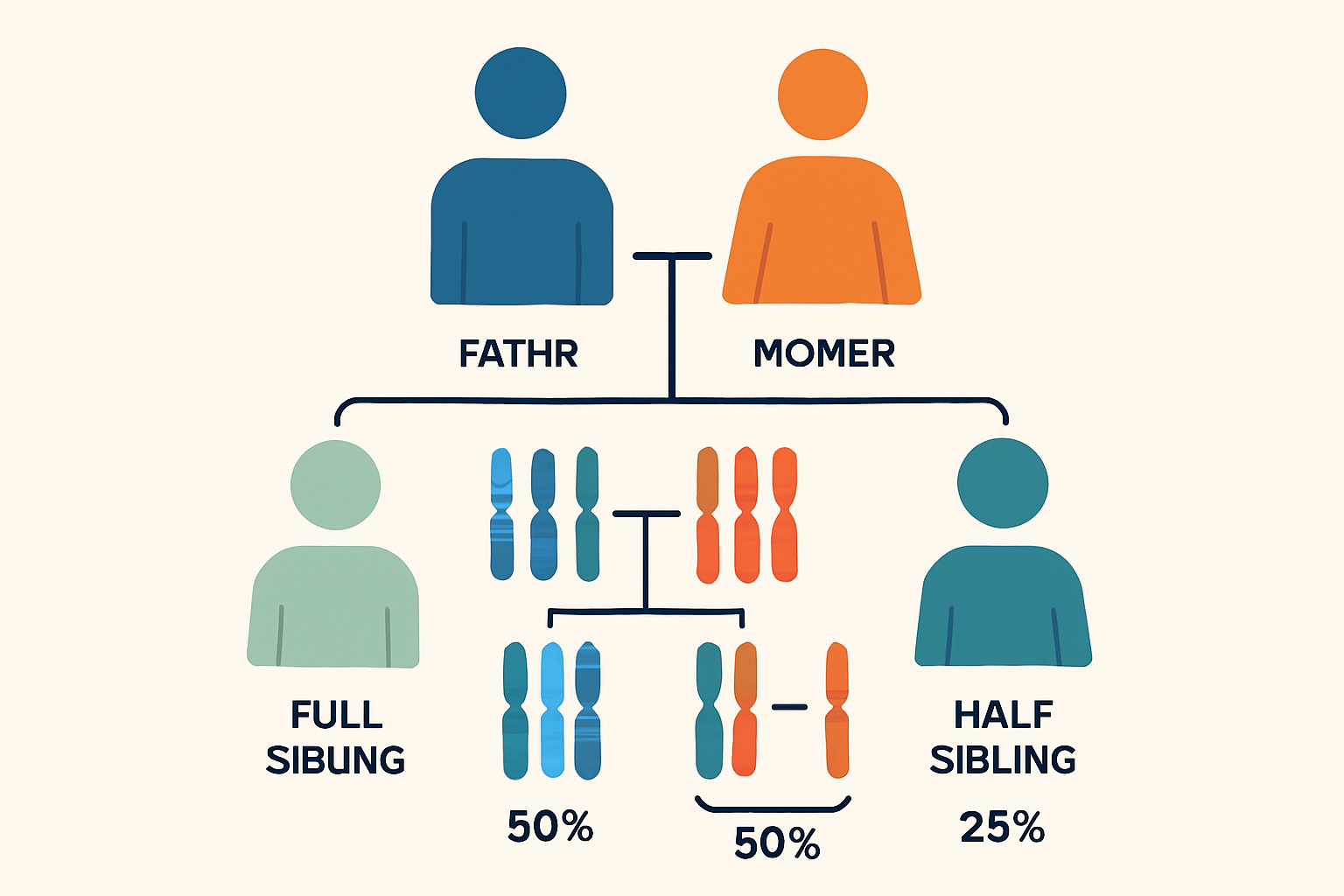
Can You Determine Paternity Through Siblings? What Science Shows


Understanding paternity is a key piece of the puzzle in many personal, social and legal situations. People often wonder if it’s possible to establish paternity without directly testing the alleged father - specifically, can you determine paternity through siblings? It’s a question that comes up more often than you might think. One common curiosity is whether you can figure out paternity through sibling DNA testing. This article dives into the science behind sibling DNA testing and explores what it can reveal about biological relationships. It is upfront about its limitations. Along the way it breaks down the genetics involved and highlights situations where sibling testing might come in handy.
What Paternity Testing Is and Why It Truly Matters
Paternity testing is a scientific method used to determine whether a man is the biological father of a child. It usually involves comparing DNA samples taken from the child and the alleged father. Establishing paternity is more than a medical or legal formality—it plays a important role in legal rights, emotional bonds, child support, inheritance, and medical history.
Understanding DNA and How It Really Shapes Those Family Ties
DNA is basically the blueprint of life, carrying the genes we get from both parents. Usually, everyone has two copies of most genes—one handed down from mom and the other from dad. Kids generally share about half of their DNA with each biological parent, give or take.
Different Types of Siblings and How They’re Genetically Related (Because Family Trees Can Get a Little Messy)
Siblings can be either full or half and knowing which is which makes a big difference. Full siblings share both biological parents and usually have about 50% of their DNA in common—kind of like sharing half a genetic recipe. Half siblings share only one parent and typically share around 25% of their DNA whether they come from the mother’s side or the father’s.
| Sibling Type | Percentage of Shared DNA | Expected Genetic Markers Shared | Common Testing Outcomes |
|---|---|---|---|
| Full Siblings | About 50% | Roughly half of the DNA variants | Clear genetic similarity, often the go-to for confirming close kinship |
| Half Siblings | About 25% | Around a quarter of DNA variants | Noticeable but weaker similarity, handy for those half-kinship puzzles |
| Unrelated | < 1% | Hardly any shared markers | No meaningful genetic relationship detected, as you’d expect |
Can You Really Determine Paternity Through Siblings Using DNA Testing?
Sibling DNA testing can offer some pretty telling indirect clues about paternity, especially when the alleged father’s DNA is nowhere to be found. By examining the genetic similarities between siblings, experts can make a good guess about how likely it is that two or more children share the same biological dad.
- Sibling DNA testing examines the genetic markers that people share to help figure out if they’re biologically related—it's like looking for family fingerprints in the code.
- This kind of testing really shines when the father's DNA isn’t on hand for a direct comparison, filling in gaps that might otherwise leave questions hanging.
- The results give you a likelihood that two individuals share the same father, though it’s worth remembering they don’t provide absolute certainty—nothing's ever 100% in these things.
- Sibling tests often come into play as extra pieces of the puzzle in paternity cases, helping to strengthen the overall evidence.
Navigating the Fine Line of Scientific Accuracy and Its Boundaries
Sibling DNA testing is generally pretty reliable when it comes to figuring out if people share one or both parents, often showing probabilities north of 90%. That said, it’s not the silver bullet for confirming paternity since siblings only share a portion of their DNA. The accuracy often hinges on how many siblings are tested and the quality of the DNA markers involved—so it’s a bit of a balancing act.
"Sibling DNA tests can really come in handy when a direct paternal DNA sample isn’t on the table. They offer valuable hints, though you definitely want a genetic expert to weigh in and interpret the results with a careful eye." — Dr. Amanda Reyes, Geneticist
Sibling DNA Testing Step-by-Step Guide (Because Sometimes, Science Needs to Play Nice with Family Drama)
Gather DNA samples from the siblings, usually a quick cheek swab or a simple saliva test—nothing too invasive thankfully.
Take a close look at specific genetic markers called short tandem repeats (STRs) tucked away in each sibling's DNA like tiny family fingerprints.
Line up those genetic markers side by side to spot the shared alleles. These are clues passed down from their common parents.
Crunch the numbers to calculate probability estimates that hint at whether the siblings likely share a father or a mother based on these overlapping genetic breadcrumbs.
Experienced geneticists and lab technicians interpret the data and put together a detailed report laying out the likelihoods and, just as importantly, any limitations or uncertainties along the way.
Common Scenarios Where Sibling Testing Comes Into Play
Sibling testing really shines when direct paternity testing is off the table. Say the alleged father isn’t around or has sadly passed on. Or he just won’t cooperate—this is where siblings’ DNA steps in to provide indirect clues. It’s also the go-to method in legal hang-ups involving inheritance or child support and for anyone curious to confirm biological family connections.
- When the alleged father has passed away making direct testing off the table.
- Cases where the father simply won’t or can’t provide a sample leaving you scratching your head.
- Individuals on a mission to track down or confirm biological family ties.
- Legal battles that hinge on indirect proof of paternity to sort out custody or support issues.
- Inheritance disputes where nailing down the biological lineage becomes absolutely important.
Key Points to Keep in Mind for Understanding Sibling Test Results (Because These Things Can Get Tricky)
Sibling DNA test results typically present probabilities rather than certainty. For example, they might tell you the "likelihood of shared fatherhood" as a neat percentage. Geneticists are your trusted guides in this maze. They help untangle the data and make it clearer what you can reasonably conclude and where the uncertainties linger. It’s important to keep your expectations in check because sibling testing often gives a strong hint at biological connections, but it’s not the final word.
Things Individuals Commonly Misunderstand About Sibling DNA Testing
- Sibling DNA tests alone can’t definitively determine paternity without testing the father and child directly because there are no shortcuts.
- Siblings, especially half siblings, often have different genetic markers so their matches may not be straightforward.
- No DNA test is completely foolproof since natural genetic variations or the testing process can affect accuracy.
- In legal or medical situations, sibling testing should not replace direct paternal testing because that step is essential.

Visual representation of genetic marker inheritance patterns among parents and siblings to explain shared DNA.
Other Routes to Consider Besides Sibling Testing in Paternity Investigations
When siblings aren’t around or sibling testing leaves things a bit fuzzy there are still other DNA testing routes to explore. Testing directly between father and child usually remains the gold standard because nothing beats the straight-up connection. If the father’s sample is out of reach you can lean on tests involving grandparents or maternity checks or even Y-chromosome analysis.
- Testing the child's DNA directly against the alleged father's usually gives the clearest and most straightforward answers.
- When the father isn’t around to provide a sample, turning to the grandparents’ DNA can shed light on that paternal connection.
- Y-STR testing homes in on the Y chromosome that dads pass down to their sons unchanged. It is a handy tool for tracing paternal roots.
- Maternity testing confirms the mother's identity. When combined with sibling testing, it can help narrow down who the father might be.
- Forensic DNA analysis sometimes comes into play for trickier cases or when legal disputes make things more complicated.
Legal and Ethical Aspects of Using Sibling DNA in Paternity Cases Navigating the Fine Print and Moral Terrain
When you ask can you determine paternity through siblings, it raises important privacy and consent issues. Everyone involved—especially the siblings—has to give their consent in line with legal requirements, no shortcuts there. Whether courts will actually accept sibling test results as solid evidence often comes down to the jurisdiction and the nitty-gritty details of the case.






